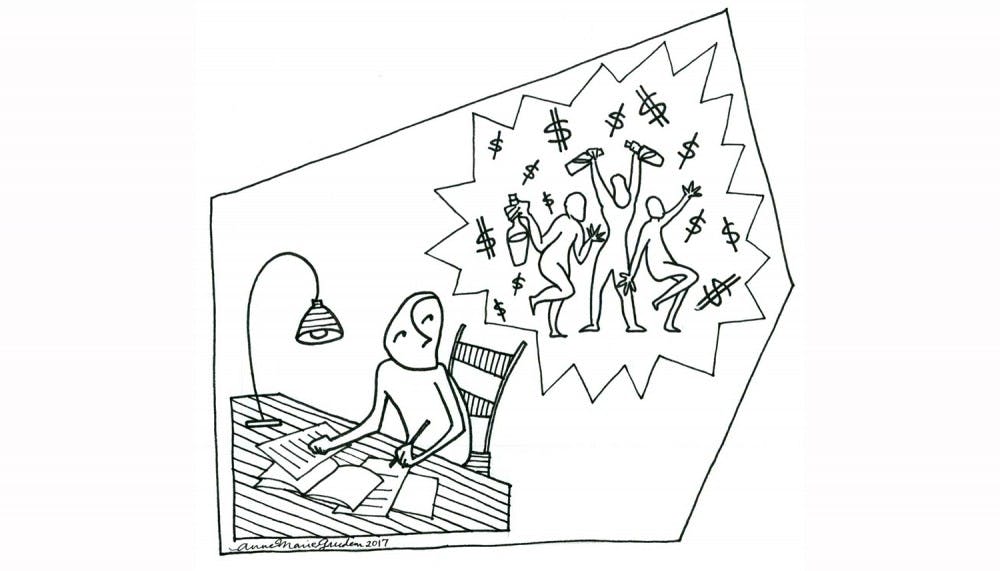It was a Saturday evening last semester. I had just left a Penn First board meeting when I ran into one of my friends at 1920 Commons. We were still in that “tell me about yourself” phase of our friendship, so naturally I mentioned my involvement with Penn First, a club that works to support first generation and/or low–income (FGLI) students.
“Yeah, so you know, I'm a first generation, low–income student.”
“Oh, really? That’s cool!”
Yeah, it sure is cool…I thought to myself. That moment would be the first of many in which my experience gets lost in translation among the top 20 percent of the income scale at Penn.
In mid–January, the New York Times posted an interactive article depicting the economic diversity and student outcomes at colleges and universities in the United States. For 38 colleges in America, more students came from the top one percent of the income scale than from the entire bottom 60 percent. In regards to Penn, nearly three quarters of students come from the top 20 percent of the income scale, while only one–fifth of students come from the bottom 60 percent. The median family income of a Penn student is $195,500.
Being low–income, part of that lower 60 percent, comes with social implications at Penn. When three out of four students I interact with come from the top 20 percent of the income scale, I try not to let them know that I am low–income unless they ask. When I tell someone I am a low–income student, I usually get the following responses: "Oh... [slightly shaken reaction]." "Oh, okay." "Oh cool!" "I'm sorry." "I understand." The context tends to revolve around why I did not attend a BYO, party or rush event. I have no reason to lie, so I tell them the truth: I am too poor. Sure, I'd like to go out and do those things, but I just cannot spend my money as freely as some students who get "alcohol allowances” from their parents. I would have considered Greek life a bit more too, but I hardly make more than the amount needed for dues.
I try to ignore whatever other students say because I usually don’t find their reactions appropriate. For instance, being low–income is not “cool”: it’s challenging, constraining and stressful. Just because my friends and I are low–income doesn't mean we hold ourselves to lower standards than the wealthier students who surround us on campus. We all have dreams and the drive to fulfill them. Most of us, however, have to balance not only academics and extracurriculars, but also work study and other financial limitations. My life is very similar to my fellow low–income peers: I am a Benjamin Franklin Scholar with a full course load. I spend 4 hours a week on two work jobs at a local high school ten blocks away from campus. I dedicate time to four clubs.
Being low–income is not something a person from the top 20 percent of the income scale can understand fully by just reading an article or watching a documentary. These students from the top 20 percent need to actively educate themselves about low–income issues. It is more than just hearing a token narrative from the 3.3 percent of the bottom 20 percent of the income scale they’re unlikely to meet at Penn. The top 20 percent also needs to be more self–aware when it comes to talking about wealth around people they do not know. Whenever my peers and I hear about someone's relatively excessive spending habits, we're a bit surprised. It is not always easy to accept that people do things like spend $100 on a BYO at an expensive restaurant multiple times a week, whereas my friends and I can only manage to do so probably once or twice a month.
Creating social awareness about low–income issues would happen more naturally if Penn was more economically diverse. From the years 1980 to 1992, access to Penn did not change for any of the quintiles mentioned in the study. With that said, I understand and appreciate Amy Gutmann’s efforts to increase donations to the university. Ideally, her work will allow more students to attend Penn who have significant financial need. So, I am a little optimistic about the future face of our school.
My optimism wavers a little, though, at two other statistics: 2.1 percent of students at Penn came from poor families but became rich adults; 13 percent of Penn students moved up two income quintiles. Part of the reason why I pursued college was the expectation that I would be able to do better than my parents. With the extra income, I could help them pay off their debts and we could all live comfortably. These statistics tell me that I am unlikely to succeed, even in attempting to move up into the middle class. Throughout my life, I have constantly heard statistics that have tried to predict my outcomes. More often than not, they were not motivational. Yet, I overcame the negativity alongside the other challenges I faced. In a way, these numbers are just another reminder that there is always going to be a negative statistic. Still, I know that I can and will overcome the odds.
To the other low–income students here, do not feel discouraged by depressing data about the past. Instead, be motivated to prove the experts wrong about the future. Here at Penn, there is an abundance of resources, supportive faculty and a sizable number of us. You do not have to struggle without help. Penn First alone provides resources like a textbook library and mentorship program. There is also a FGLI Community @ Penn GroupMe where students can stay connected and find out more information about programs, events and most importantly, free food. Moving forward, I can only hope that the FGLI community will continue to grow and include more allies. In this way, we can all work to eliminate those awkward Saturday evening encounters.







